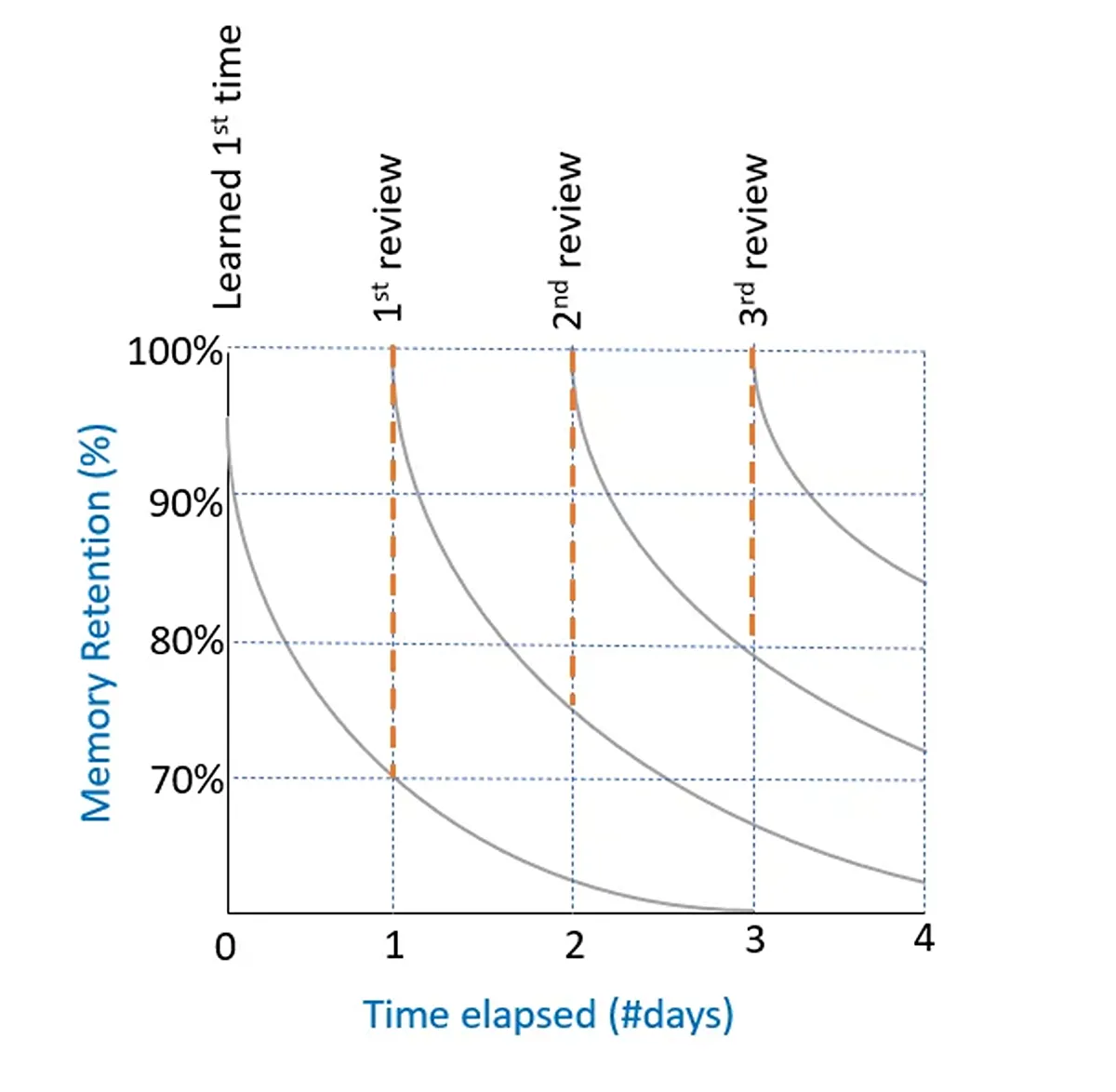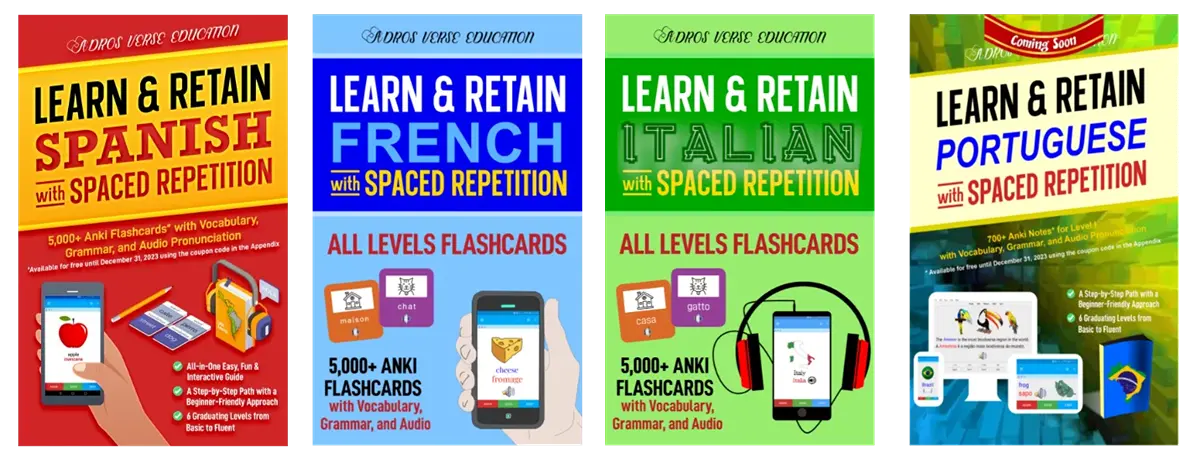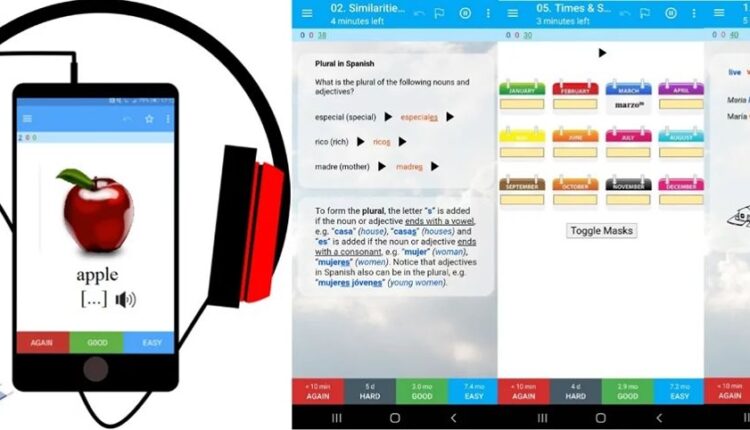How to Learn & Retain Foreign Languages with Spaced Repetition using Anki Flashcards
How many times have you learned something but then forgot it when you got rusty? Now imagine there was a way to review the things that you’re going to forget just before you forget them, without getting bored with having to review the things that you already remember. This is what spaced repetition is supposed to do.
Spaced Repetition Methodology
Spaced repetition is a method of learning new material and then reviewing it at spaced intervals. Spaced repetition is often done using flashcards. Cards that you remember well (e.g., easy material) appear less often, while cards that you encounter and find difficult to remember (e.g., difficult material) appear more often.

You can think of spaced repetition as an enhancement of the old flashcard learning technique. Flashcards work by imprinting material into a student’s memory, regardless of how many times the student has successfully memorized the material. This makes the learning process boring and unenjoyable. Spaced repetition overcomes this disadvantage by presenting the material to the student at a frequency that is inversely proportional to his or her ability to memorize it. In this way, students ideally get to review the material shortly before they are about to forget it.
Since C. A. Mace’s study in 1932, much research has been carried out into the usefulness of spaced repetition. Since then, it has continued to be a topic of interest for researchers and people who want to improve their memory.In any case, we believe that the improvement that spaced repetition brings over old flashcard techniques, particularly when learning a new language, is significant and quite helpful.
Spaced Repetition Softwares
To apply spaced repetition to flashcards, we need to set many parameters, such as the spacing between repetitions and whether the spacing is fixed or graduated. There are many programs that use various algorithms to implement spaced repetition. We will not go into detail about the individual software programs and the algorithms they use.
We will instead opt for the most popular software among students and language learners: Anki. The word “Anki” means “memorization” in Japanese. The application was created in 2006 by Damien Elmes and uses an algorithm called SM-2 developed by SuperMemo. Anki offers many useful features while maintaining a reasonable level of simplicity and user-friendliness.
How Languages are Learned
Of course, we learn our first language, also called our “mother language” or “mother tongue,” relatively easier than a second or foreign language. As humans, we instinctively learn the language most commonly spoken at home during our childhood.
As we grow up, we learn to communicate with others and develop a deep understanding of the words and rules of our primary language, which serves as a model for understanding other languages in the future.
Therefore, after we have learned and mastered a (native) language, we can start learning other languages and thus establish certain relationships in the new language with our main language.
There are many studies that try to answer the question: “How many words do I need to know to understand X% of the language?”Stuart Webb, a professor of linguistics at the University of Western Ontario, says a typical native speaker knows between 15,000 and 20,000 word families. A word family is the base or root form of a word (e.g., break, breaker, breaking, broken, etc. all count as a word family). A student who learns only the 800 most common words in the English language can understand 75% of the language used every day.
Research by Francis and Kucera in 1982 showed that a vocabulary of 2,000-word families was sufficient to cover almost 80% of written English text. According to Professor Webb, in order to understand dialogue in films or television, you need to know the 3,000 most common word families. A similar statement was made by the famous linguist Paul Nation, who defines 3,000 as an appropriate threshold for high-frequency words that a second language learner needs.
Using a Book hand-in-hand with Anki for Language Learning
Many Anki cards are available online. Some are free and many others are more expensive. However, the problem with many products available is that they simply do not have the progressive trajectory to guide the learner who simply goes over as many cards as he or she can. Nevertheless, memorization is different from mastering the language, which requires understanding the material being learned.
To solve this missing piece of the puzzle, ADROS VERSE EDUCATION products provide the right introduction, progression, and grammar knowledge to make sense of the information you want to remember while studying your Anki cards.

For each language, there are two products that you can use hand-in-hand:
Book: covering six graduating levels from basic to fluent, provides an intuitive path to easily improve your language level, memory, and grammar skills. The book is available in Spanish, French, and Italian. It will soon be available in Portuguese.
Anki Package:
Featuring an incredible anki deck collection of 5,000+ Spanish flashcards that you can use independently or hand-in-hand with the book “Learn & Retain Spanish with Spaced Repetition,” the Spanish Anki decks include grammar material and audio elements to help you with pronunciation.
Also available now:
- 5,000+ French flashcards &the book “Learn & Retain French with Spaced Repetition” featuring Anki French decks. Learn how with French vocabulary flashcards and a collection of French verbs Anki decks.
- 5,000+ Italian flashcards &the book “Learn & Retain Italian with Spaced Repetition” featuring Anki Italian decks. Learn how with Italian vocabulary flashcards and other collections of Anki decks.
Soon will be available:
- 5,000+ Portuguese flashcards &the book “Learn & Retain Portuguese with Spaced Repetition” featuring Anki Portuguese decks.
To learn more, visit their website at: https://www.adrosverse.com/

